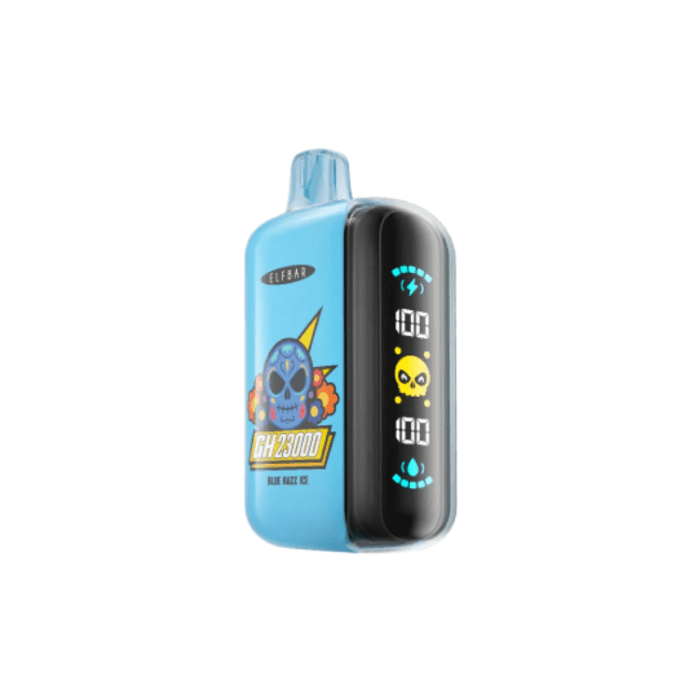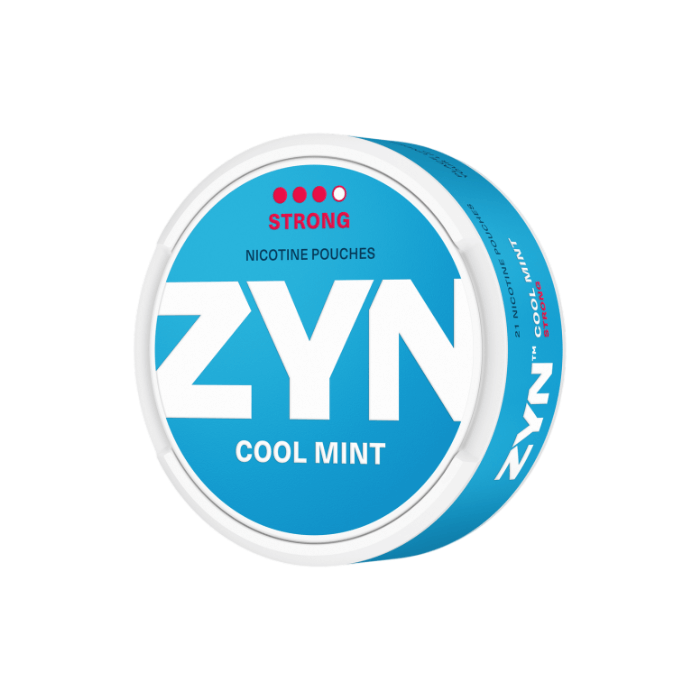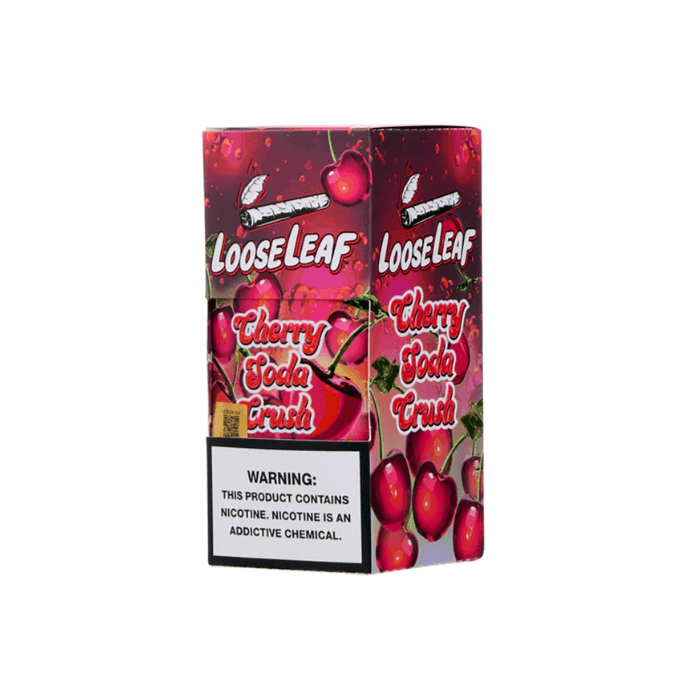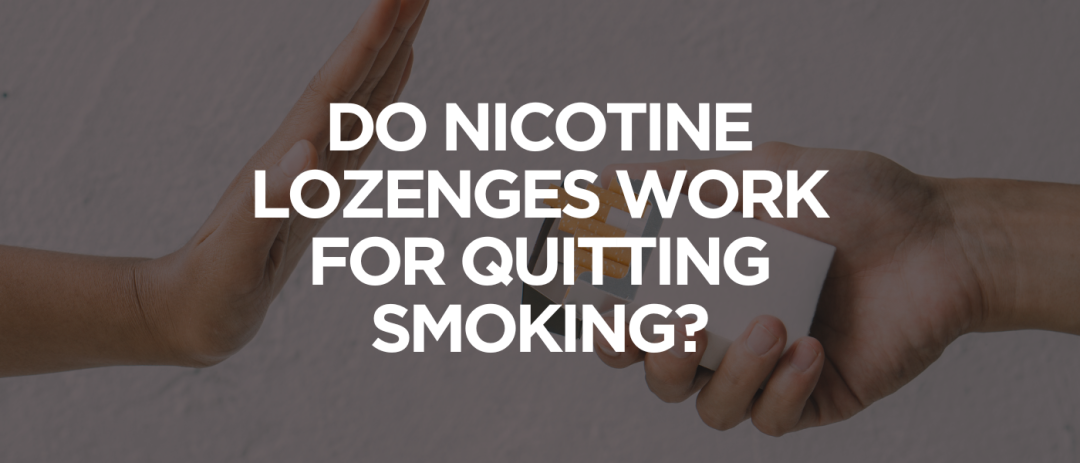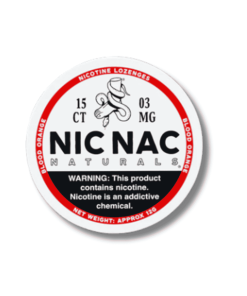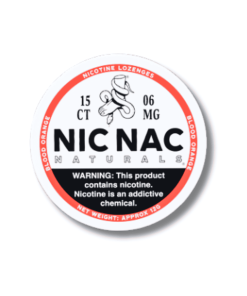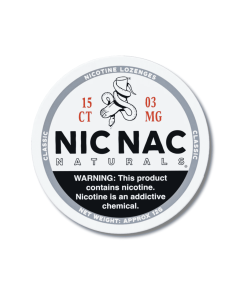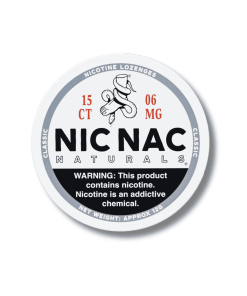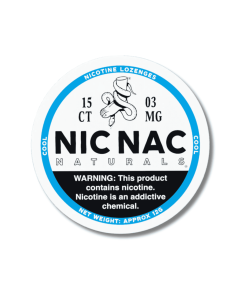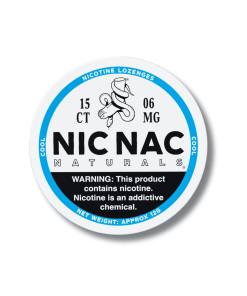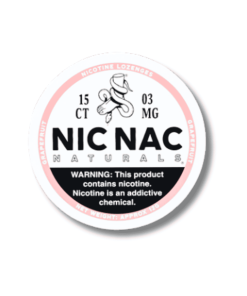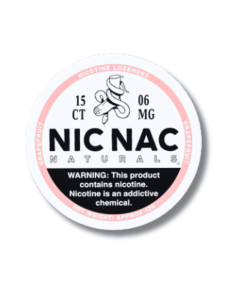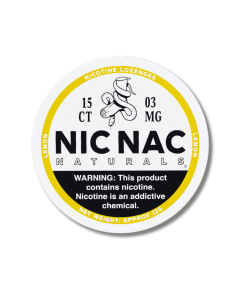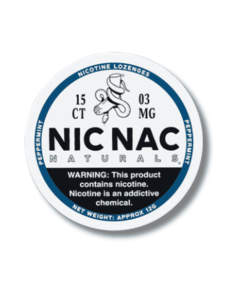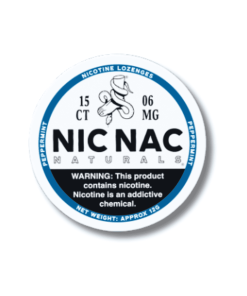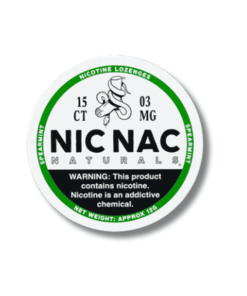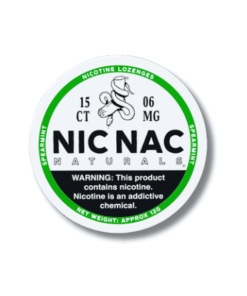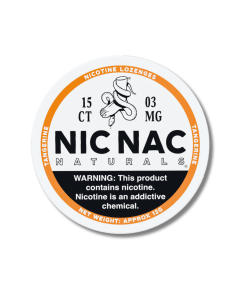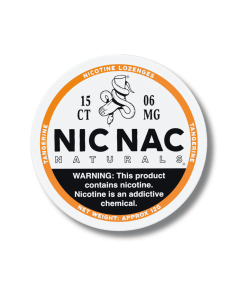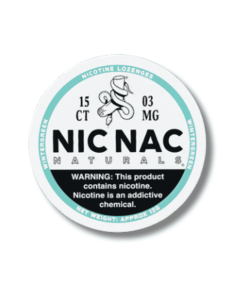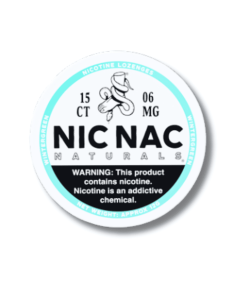Health, Nicotine Lozenges
Do Nicotine Lozenges Work for Quitting Smoking?
Quitting smoking doesn’t usually come with fanfare or some cinematic moment of clarity. For most, it starts with a simple, quiet decision: “I don’t want to do this anymore.” That thought snowballs into research, maybe some anxious pacing, and eventually lands on something like nicotine lozenges. They’re unassuming—small, slow-dissolving, and tucked away in a pocket or purse. But they’ve become a go-to option for many Canadians ready to ditch cigarettes. So, do they actually help? Can a little tablet really make a difference in breaking a habit that’s clung on for years, sometimes decades? Let’s break it down, explore how these things work, and see if they’re just clever marketing or a genuinely helpful stepping stone toward finally quitting for good.
Introduction to Nicotine Replacement
Nicotine replacement therapy—often shortened to NRT if you prefer to save a few syllables—isn’t some fresh-out-of-the-lab trend. It’s been kicking around for decades, quietly giving folks a fighting chance at smoking cessation without having to dive headfirst into cold turkey chaos. The goal is pretty straightforward: ease off the nicotine without dragging along the tar, carbon monoxide, and every sketchy chemical that comes from lighting up.
There’s more than one type of nicotine replacement out there. You’ve probably heard of the big players—nicotine gum, nicotine patch, and of course, nicotine lozenges. Each one works a little differently, but the mission stays the same: manage nicotine cravings and help take the edge off those nasty withdrawal symptoms. Some options like the nicotine patch offer a slow, all-day release. Others, like nicotine gum and nicotine lozenges, are quicker to act—especially helpful during moments where your brain is screaming, “Just one smoke!” for the fifth time that morning.
Using nicotine lozenges is especially popular among people who need something subtle and flexible. No chewing, no sticking a patch to your arm. Just a quiet melt-under-the-tongue kind of deal that gives your system a little relief while helping you push back against nicotine dependence. They’re also a smart choice if you’re trying to quit smokeless tobacco, since they mimic the hand-to-mouth behavior and oral fixation without feeding the habit.
Quitting isn’t just a mental game. There’s a real physical process happening—physical withdrawal symptoms like irritability, restlessness, and that jittery sensation that makes you want to pace in circles like you’re waiting for bad news. A good type of nicotine replacement, like a lozenge, helps soften that blow and gives your body a way to adjust without losing its mind.
In Canada, where support systems are solid and NRT products are widely available, this stuff has become an essential tool in many people’s smoke-free journey. No smoke, no fire, no fanfare—just something that works quietly while you figure out the rest.
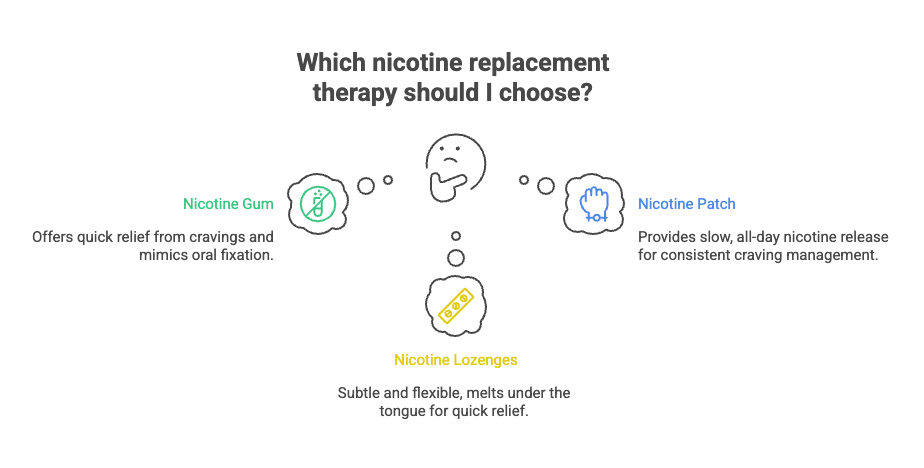
Effectiveness of Nicotine Lozenges
Alright, let’s rip the Band-Aid off. Do nicotine lozenges help people quit smoking? Yes. And now that we’ve said it once, we won’t say it a third time. Let’s unpack it instead.
These little tablets of hope work by delivering a steady, low dose of nicotine to your system without all the extra junk you’d normally inhale from a cigarette—tar, carbon monoxide, and a laundry list of chemicals you can’t pronounce. By giving your brain the nicotine fix it’s screeching for, they soften the withdrawal crash and curb cravings. Think of it like gradually weaning yourself off junk food by switching to air-popped popcorn. Not the same… but also not an artery-clogging disaster.
Clinical research done in Canada and beyond has backed their effectiveness, especially when paired with behavioural support—things like hotlines, apps, and people who won’t roll their eyes when you talk about your 11PM smoke cravings. Users have reported fewer cigarettes smoked per day within weeks, and a higher success rate in long-term quitting attempts compared to folks who tried cold turkey.
Now, here’s the catch: nicotine lozenges aren’t magic beans. You can’t just pop one in and suddenly forget what a cigarette is. They’re a tool, not a miracle.
Nicotine Replacement Therapy Options
If nicotine replacement therapies were a high school, lozenges would be the quiet kid who gets things done behind the scenes. Then there’s the flashy e-cigarette crowd that’s always in detention, the patch that’s basically the school nurse’s best friend, and gum—that kid that tries really hard but just ends up annoying half the class with loud chewing.
Lozenges fall into the more manageable, fuss-free side of the nicotine replacement spectrum. You pop one in, let it dissolve slowly (don’t chew it like gum unless you enjoy heartburn and disappointment), and it does its thing. It bypasses the lungs, which is a big win, especially for folks trying to give their respiratory system a bit of a break.
There’s also a psychological angle. Smoking has rituals—lighting up after coffee, a puff before a meeting, one right after food. Lozenges can sneak into those same moments and fill that behavioural void. They’re tiny but mighty in that sense.
That said, some people vibe better with other options. Patches are low-maintenance and deliver nicotine all day. Gum works faster but wears off quicker. Sprays and inhalers exist too, but those can feel a bit clunky or awkward depending on where you are—nobody wants to be the person puffing into a weird plastic tube during a first date.
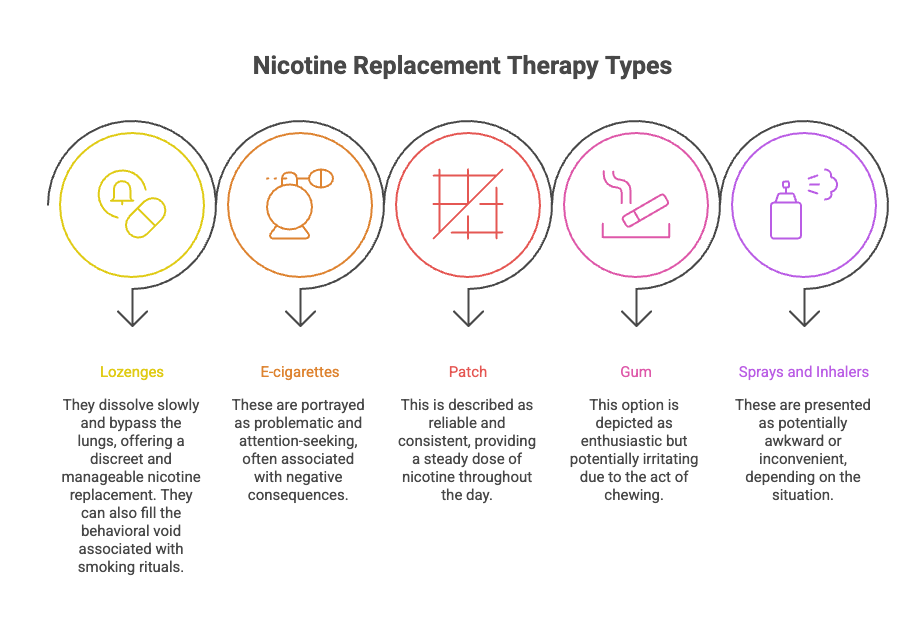
Combination Nicotine Replacement Therapy
Let’s say your first cigarette of the day used to hit different—it probably did. That early-morning inhale wasn’t just a habit; it was your brain kicking off its daily dose of an addictive substance it’s come to rely on. For a lot of adult smokers, that craving runs deep, and a single approach doesn’t always cut it during a quit attempt.
That’s where combination nicotine replacement therapy rolls in. Instead of putting all your eggs in one basket, this method mixes a long-acting option—like a nicotine patch—with something faster like a lozenge in your mouth when the cravings punch through. The patch provides a steady, measured dose throughout the day, keeping nicotine levels balanced enough to avoid the rollercoaster of ups and downs. But when your routine gets shaken—stress at work, a tense conversation, or that weird quiet moment after dinner—that’s when you pop in the lozenge and let it handle the sudden spike in urges.
Some people just need more nicotine support than others. And that’s not a failure—it’s chemistry. Nicotine is designed to keep pulling you back in, and for some, especially those who’ve smoked for years or relied on it to manage stress, one tool alone won’t deliver enough nicotine to truly hold the cravings at bay.
This approach is especially helpful for light smokers, too. You might assume they have an easier time quitting, but the truth is they often feel the psychological grip just as strongly—and still face the same physical withdrawal symptoms. Even if they smoke fewer cigarettes, the habit still holds tight, and combination therapy offers that little extra nudge without flooding the system.
Using two nicotine replacement products can also make a difference for those who’ve tried and failed before. For many people quit smoking only after tweaking their strategy, not just trying harder. It’s like patching a leaky roof—you can’t just throw on one tarp and hope for the best. You need layers.
Now, just because you’re doubling up doesn’t mean you’re off the hook for being mindful. Using more than the recommended dose—whether from a patch, lozenge, or both—can lead to side effects like headaches, nausea, or even high blood pressure. Keep it measured, pay attention to how your body reacts, and, if anything feels off, have a chat with your pharmacist. Most Canadian pharmacies are more than ready to help guide you through options, dosages, and timelines.
At the end of the day, combination therapy is about stacking the deck in your favour. You’re not giving in—you’re getting strategic. And with every lozenge, every patch, and every smoke-free morning, you’re pushing nicotine further out of your life.
Quit Smoking with Nicotine Lozenges
Now that we’ve peeled back the science and strategy, let’s talk about the real day-to-day of using nicotine lozenges. You wake up, have a coffee, feel that itch start to crawl up your spine… you pop a lozenge. It’s not instant bliss, but the craving dulls. That’s the moment where change begins—not with fireworks or angelic choirs, but with a simple, minty disc working quietly behind the scenes.
The trick is to keep them handy. Like actually handy. Not buried in your glove box behind three expired insurance cards and an emergency ketchup packet. Keep one in your pocket, your purse, your desk drawer. Have a plan for your triggers—know which moments hit hardest and be ready.
And don’t worry if it feels awkward at first. Everything feels awkward at first. Remember learning to parallel park? Exactly.
For most Canadians trying to quit, the mental side of things is just as loud as the physical cravings. Lozenges can take the edge off both—giving your brain a task while your body adjusts. Just don’t go chomping them like candy. Let them dissolve slowly and do their thing.
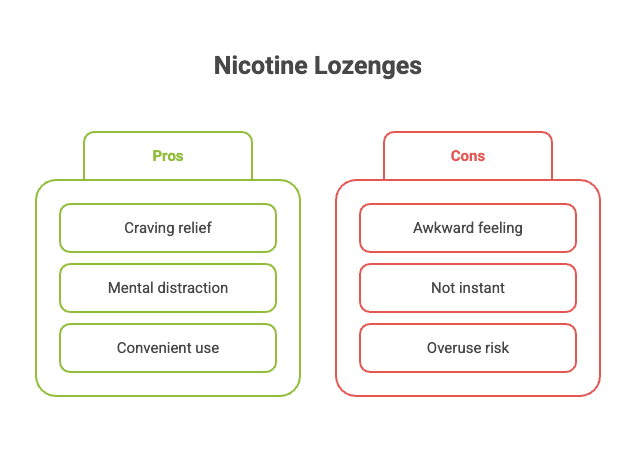
Nicotine Overdose Considerations
When you’re trying to stop smoking, nicotine replacement can absolutely help you quit—but it’s still nicotine, and too much of it can throw your body for a loop. Whether you’re using a patch, mini lozenge, or both, sticking to the recommended dose matters. Overdoing it can lead to things like nausea, chest pain, or an irregular heartbeat, which obviously isn’t the vibe anyone’s going for during a quit program.
It’s also good to know how your body reacts. Some people experience skin irritation from patches, or heartburn trouble with lozenges—especially if they chew or swallow them too quickly instead of letting them dissolve. Throw acidic drinks like coffee or juice into the mix, and you might just lower how well the lozenge works.
While rare, signs of an allergic reaction—like swelling, rash, or breathing issues—shouldn’t be brushed off. And if you’re on other medications or have a history of heart attack, it’s smart to talk to a doctor or pharmacist first. In Canada, many community health centres and disease control programs offer guidance tailored to your situation, no appointment needed.
Bottom line: nicotine replacements can seriously help you quit, but they’re not harmless candies. Use them properly, stay within the guidelines, and you’ll be way more likely to move through your quit plan without unnecessary detours.
Staying on Track
Alright, quitting smoking isn’t a clean, straight path. It’s a snow-covered hiking trail in January where you sometimes slip, sometimes veer off course, and sometimes just sit down and scream into the void. But if you’re using lozenges, you’ve already taken a step off the cigarette train.
Staying on track is mostly about preparation and grace. Have backup lozenges around. Celebrate little wins. Talk to someone—literally anyone—when you’re feeling on edge. Your aunt, your barber, your cat (okay, maybe not your cat). If you’re in Canada, there are free programs across provinces, including phone lines like Smokers’ Helpline, and apps designed just for quitting.
Also, don’t toss your progress in the garbage the moment you slip up. Slipping doesn’t erase your effort. It just means you’re human. Dust off, chew another lozenge, and keep going.
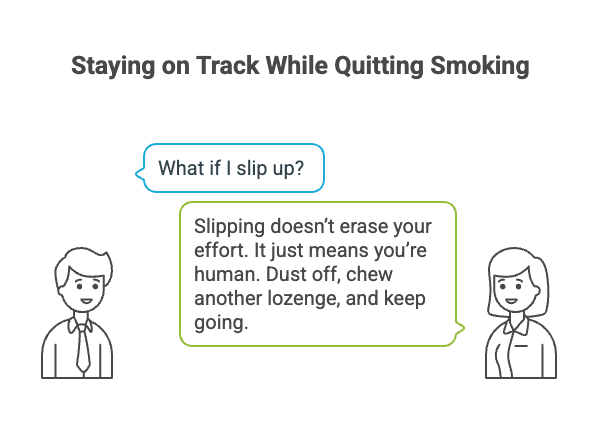
Common Challenges
No one quits smoking because it’s easy. You’re going to hit some speed bumps. Maybe it’s the taste of the lozenges (some flavours are better than others—trust us), or maybe it’s the way cravings sneak up like a horror movie jump-scare during your favourite show.
Sometimes, it’s social stuff. You’re around people who still smoke. You’re stressed out from work. You’re watching a hockey game and the muscle memory kicks in.
And then there’s boredom. Ah, boredom—the unspoken enemy of quitters everywhere. Smoking used to fill time, calm nerves, give you a break. Without it, you might feel… untethered. That’s normal. But you can fill the gaps with other rituals. Tea. Walking. Calling that one cousin who always overshares. Anything that gives your brain a new groove to fall into.
Also, don’t expect every lozenge to work like a superhero. It’s a nicotine aid, not a life coach. Use it, but also build new habits around it.
Frequently Asked Questions
How quickly do nicotine lozenges work?
They usually start easing cravings within 15 to 20 minutes as the nicotine slowly absorbs through your mouth lining.
Do you feel anything from nicotine lozenges?
You might notice a slight tingling or warm sensation. That’s normal. It’s just the nicotine kicking in—no fireworks, just a calm fade of the craving.
Summary
So, back to the big question: Do nicotine lozenges work for quitting smoking? Yeah, they do. They won’t write your success story for you, but they’re a solid chapter in it.
They’re portable, discreet, and help you manage those wild, mid-day cravings without inhaling a pile of chemicals. They work even better when you pair them with something like a patch, or, you know, willpower mixed with support from friends, family, or a good ol’ Canadian quit-smoking hotline.
Now, if you’re someone who’s still on the fence, or maybe you just need to stock up on the essentials—you know where to go. NativeSmokes4Less isn’t just some random shop. We’ve got all the good stuff. Nicotine lozenges, vapes, nicotine pouches, and premium cigars that don’t smell like regret. And yes, everything is authentic. We don’t deal with knockoffs—principles and all that.



